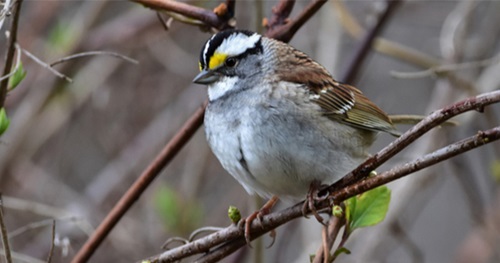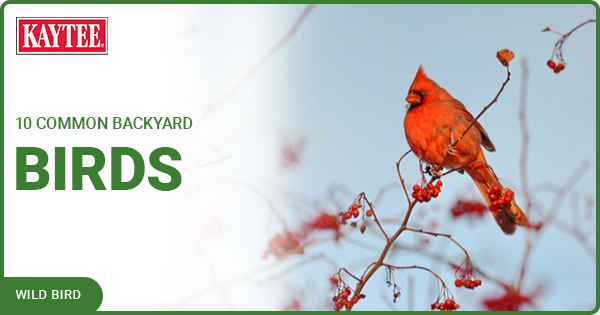Top Backyard Bird Sounds You'll Hear
One of the joys of learning to identify avian species doesn't require binocular adjustment. Instead, tune the dial on your listening skills. Birding by ear can reveal unseen visitors in the treetops, such as tanagers, lead you to wrens in forests and canyons, and uncover elusive birds such as rails in the wetlands. It is also a useful tool for discovery of backyard bird sounds.
Let's explore!
Common Backyard Bird Sounds (and how to identify them):
Listen for Pitch
When learning to listen with intent, start by noticing if the bird song is high pitched or low-pitched. It helps to picture if the song varies while they are singing. Does it rise, fall or remain about the same?
The familiar Northern Cardinal and its western counterpart, the Pyrrhuloxia, often sing sharp, high-pitched whistles with repetition but minimal rise and fall.
Across North America there are seven wren species holding classes on songbird pitch. These small, brown bundles of energy defy their appearance with full-throated songs of ascending and cascading notes, rolling chants, bubbling trills, complex series, high staccato sounds, soft lower notes, mechanical rattles, and/or buzzy phrases depending on species.
Song Pattern
To determine the pattern in a bird's song, consider two aspects. The first is rhythm. Is there a sequence of notes that creates a noticeable repetition? These “phrases" are helpful in identification. Also notice if the sequence is rapid or leisurely.
Second, relax your listening and pretend for a moment that the bird is talking" to you. Do the sounds make you think of words?
One of the most easily recognizable songs based on pattern is from the White-throated Sparrow. This songbird seems to say, with very little change in pitch, “old Sam Peabody, Peabody, Peabody." Also, of the seven North American chickadees, many seem to say their name with some variation of a rapid “chik-a-dee-dee-dee." The Black capped Chickadee, however, may sing the song of another dee species in overlapping areas since they learn their songs, making for a fun identification challenge!

Musicality
Next, make an assessment of the musical qualities of the specific song that catches your ear. Does it seem like a melody or would you describe it more like a buzz, squeak or other non-musical sound? Also note the volume(s). Is the song loud, soft or a mixture?
One of the most talented birds with a large repertoire of music, sounds, and pitch and pattern changes is the Northern Mockingbird. As experts in mimicry, these birds repeat various phrases anywhere from two to six times. They've been heard singing the songs of other birds, imitating frogs, cats and dogs, and even making the “truck-in-reverse" beeping sound.
Some birds are difficult to distinguish by sight, yet are discernable by unique songs, as with flycatchers. Some species call out at night and others hide in dense foliage. So, a final bonus for learning backyard bird sounds is that it may just allow you to specifically identify species that would otherwise be a fly-away mystery.
Happy birding by ear!






.png?h=315&iar=0&w=600&hash=9C09A701CB4D5CF9B2C5B7FA2DA01F2E)



